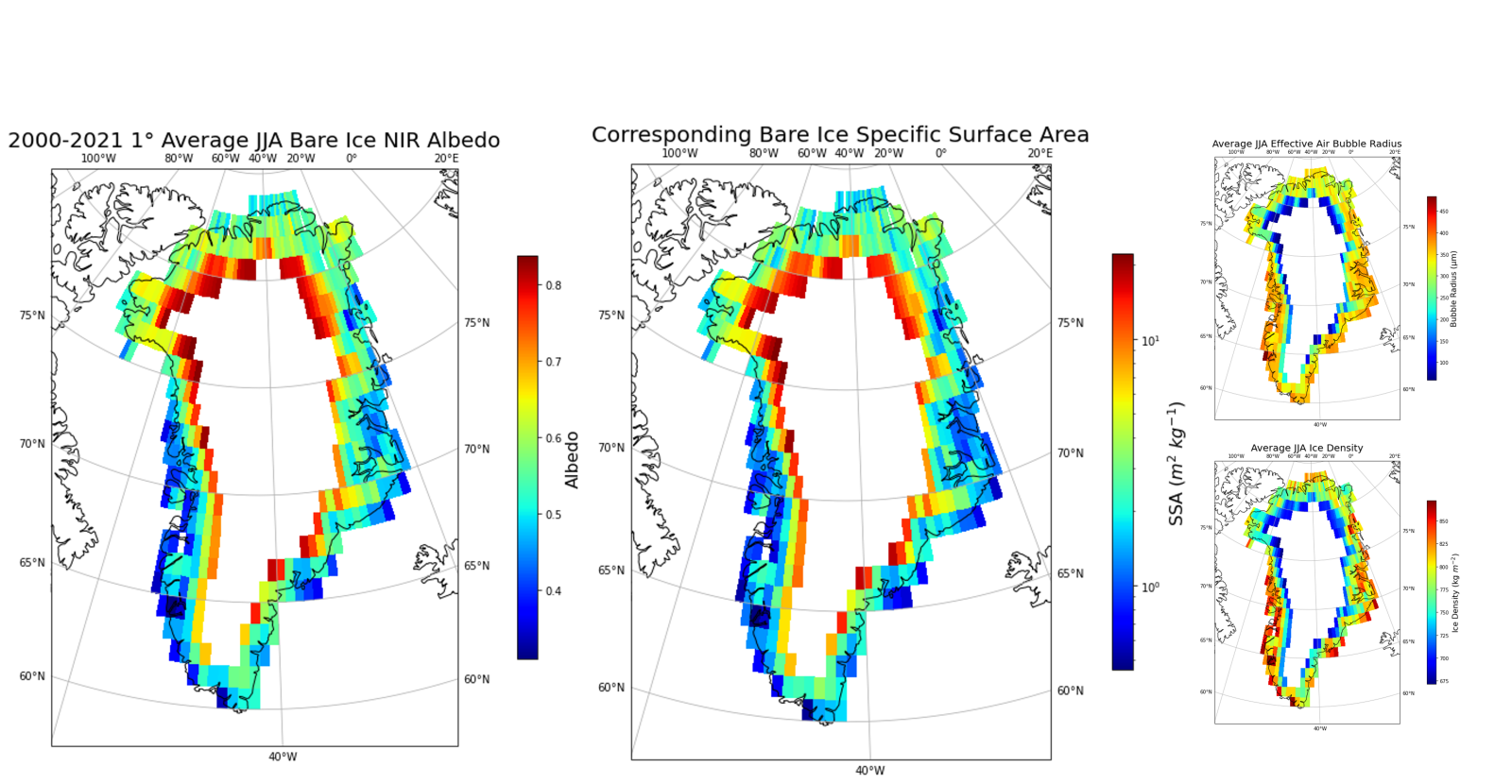Incorporating Physically Based Bare Ice Albedo over Greenland within the Energy Exascale Earth System Model (E3SM)
The Greenland Ice Sheet (GrIS) is the largest cryospheric contributor to sea level rise (SLR). More than half of the total contribution of melt water from the GrIS originates from surface melt. The surface mass balance is modulated in part by the albedo, or the reflectiveness, of the surface of the ice sheet. Recent modeling work and field observations have found that bare ice has highly variable albedo. However, historically the Energy Exascale Earth System Model (E3SM) prescribed a constant albedo of bare ice in the visible (0.6) and near infrared (0.4) bands. We have implemented a physically based ice radiative transfer scheme, the Snow, Ice, and Aerosol Radiative transfer Adding-Doubling model version 4 (SNICAR-ADv4), into E3SM. We utilize MODIS reflectance (MOD09GA) and albedo (MCD43A3) products to retrieve the specific surface area of the bare ice. The related intrinsic ice physical properties (air bubble effective radius and ice density) are then specified in the snow and ice radiative transfer model within E3SM to provide a spatially and temporally varying bare ice albedo over the GrIS. Our results show that the albedo of bare ice in the low elevation ablation zone is lower than previously prescribed in E3SM, and the albedo in the higher elevation regions of the ablation zone is higher than previously prescribed. We hypothesize that the spatio-temporally uniform E3SM ice albedo prescription overestimates the GrIS-wide bare ice surface albedo and therefore underestimates the total contribution of GrIS surface melt to SLR.

